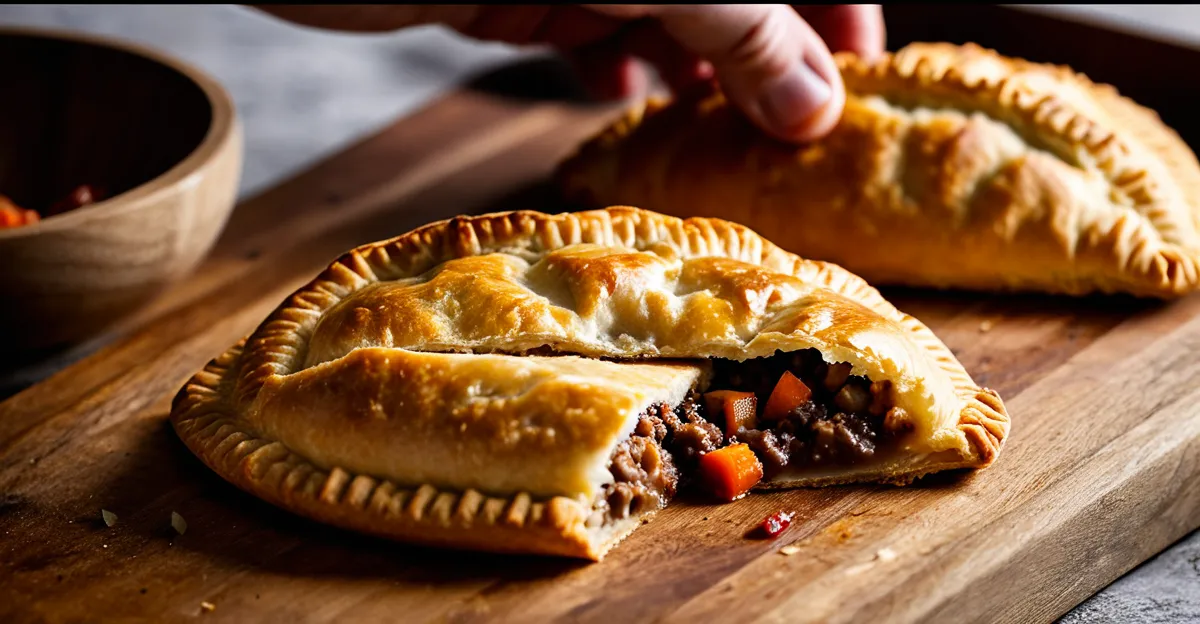Essential ingredients and culinary equipment for Cornish pasty preparation
Selecting the right Cornish pasty ingredients is the foundation of authentic flavour and texture. Traditionally, a Cornish pasty includes diced beef skirt, peeled potatoes, swede (rutabaga), and onions in measured quantities to maintain the proper balance. For example, a typical pasty filling might use 200g beef, 100g potatoes, 75g swede, and 50g onions, seasoned simply with salt and black pepper. These precise measurements ensure consistent quality and taste.
Equally important are the kitchen tools required. You’ll need a sharp chef’s knife for accurate chopping, a sturdy cutting board, a mixing bowl to combine filling ingredients evenly, and a baking tray lined with parchment paper. A rolling pin is essential to achieve the ideal thickness for your pasty pastry, while a pastry brush helps with egg washing for a golden finish.
Have you seen this : What Makes British Home Cooking Unique?
Using traditional pasty essentials such as high-quality beef and fresh vegetables elevates the final product. Opting for locally sourced and fresh ingredients emphasizes authenticity and contributes to a richer, more satisfying pasty. By combining these thoughtfully chosen ingredients with the correct culinary equipment, you set yourself up for a successful Cornish pasty experience.
Preparing the perfect Cornish pasty pastry
Crafting a flawless Cornish pasty pastry recipe begins with using quality ingredients such as plain flour, cold butter, cold water, and a pinch of salt. The cornerstone is homemade shortcrust pastry, prized for its flaky and crisp texture. Combine flour and salt, then rub in chilled butter until the mixture resembles fine breadcrumbs. Gradually add cold water, mixing just until the dough binds—overworking toughens the pastry.
Also read : How can you create a classic Eton mess with seasonal fruits?
Pastry techniques emphasize chilling the dough for at least 30 minutes before rolling. This resting phase relaxes gluten strands, preventing shrinkage during baking and contributing to a tender bite. Roll the dough evenly to about 3-4 mm thickness, ensuring uniformity for even cooking.
For achieving a flaky crust, handle the dough gently to preserve butter pockets, which create layers on baking. Using a rolling pin with steady, light pressure avoids compression. Avoid excess flour during rolling to maintain pastry lightness.
Following these steps in the Cornish pasty pastry recipe yields a golden, crisp shell that perfectly encloses the traditional filling, balancing texture and flavour in the final pasty.
Crafting the authentic Cornish pasty filling
Achieving the right Cornish pasty filling relies on precise selection and preparation of classic ingredients: diced beef skirt, peeled potatoes, swede, and onions. Each component has a distinct role—beef provides hearty flavour, potatoes add body, swede contributes sweetness, and onions enhance aroma. To maintain authenticity, ensure all filling ingredients are cut into uniform cubes, typically around 1 cm, allowing even cooking and texture balance.
The layering in the filling is crucial. Start with the beef as the base, followed by potatoes, swede, and onions on top. This structure prevents moisture from the vegetables soaking the meat excessively, preserving a perfect balance between hearty and tender textures. Season simply with salt and freshly ground black pepper to let natural flavours shine.
Managing moisture is key; excess water from vegetables can cause soggy pastry. To control this, briefly drain the filling or pat vegetables dry before assembling. This practice guards against sogginess, supporting the traditional crisp pastry and rich, cohesive filling.
By focusing on ingredient quality, uniform cutting, and thoughtful layering, you create an authentic traditional filling that honours time-tested Cornish recipes and ensures a flavourful pasty experience every time.
Step-by-step assembly of the Cornish pasty
Proper assembly instructions begin with proportionate filling placement. Use about 200g of the prepared traditional filling, evenly distributed on one half of the rolled-out pastry. This ensures balance between filling and pastry, avoiding over-stuffing, which can lead to uneven cooking or breaking.
When it comes to pasty assembly, fold the empty pastry side over the filling to form a semi-circle. The key lies in creating a strong seal to keep the filling in place during baking. Lightly dampen pastry edges with water to improve adhesion.
The signature sealing techniques involve crimping the edge firmly but gently, using thumb and forefinger or a fork. This crimp creates the pasty’s iconic ridged edge and offers structural integrity. Work methodically along the edge, pressing consistently to prevent gaps that could lead to juice leaking and soggy pastry.
Shape the pasty to have a slight dome, allowing space for filling expansion. This method results in even, sturdy pasties with a neat appearance, preserving both texture and traditional aesthetics. Mastering these steps ensures your Cornish pasties hold their form and deliver the perfect eating experience.











